Strategic Plan for HIV/AIDS: Implementation, Evaluation, and Ethics
VerifiedAdded on 2022/11/11
|14
|1110
|156
Report
AI Summary
This report presents a strategic plan aimed at reducing HIV/AIDS infections and transmission, emphasizing the application of an evidence-based practice (EBP) model. The plan involves detailed research, identifying causes, implementing medical interventions, and educating the public on healthy practices. The report addresses potential barriers to implementation, such as opposition and financial limitations, and proposes solutions. Internal evidence will be used to demonstrate improved outcomes by documenting reduced new cases. The evaluation of the practice change will consider the reduction in infections and public engagement. Ethical considerations, including client confidentiality and professional conduct, are also discussed. References to supporting literature are provided, reinforcing the importance of evidence-based approaches in public health strategies.
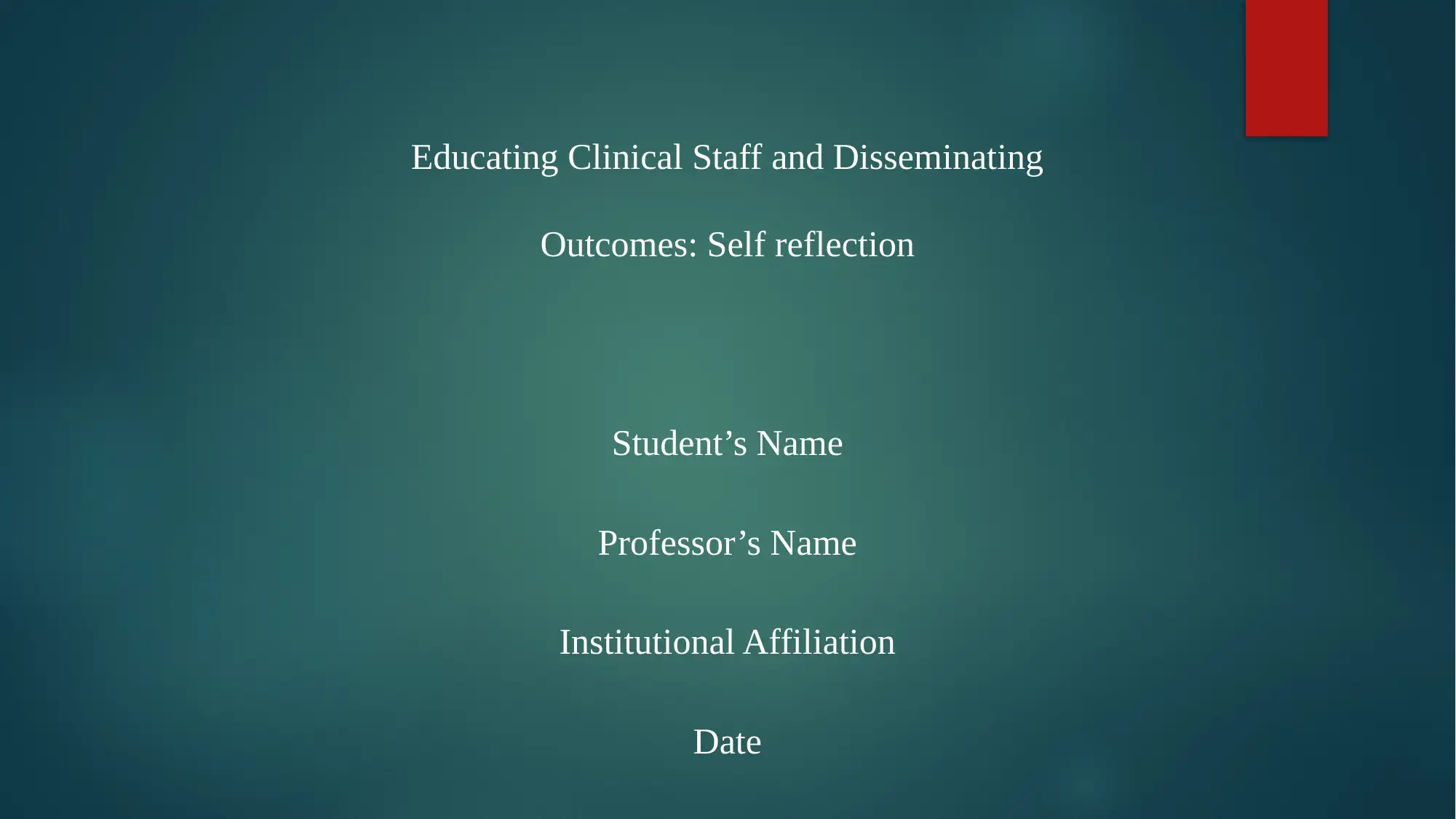
Educating Clinical Staff and Disseminating
Outcomes: Self reflection
Student’s Name
Professor’s Name
Institutional Affiliation
Date
Outcomes: Self reflection
Student’s Name
Professor’s Name
Institutional Affiliation
Date
Paraphrase This Document
Need a fresh take? Get an instant paraphrase of this document with our AI Paraphraser
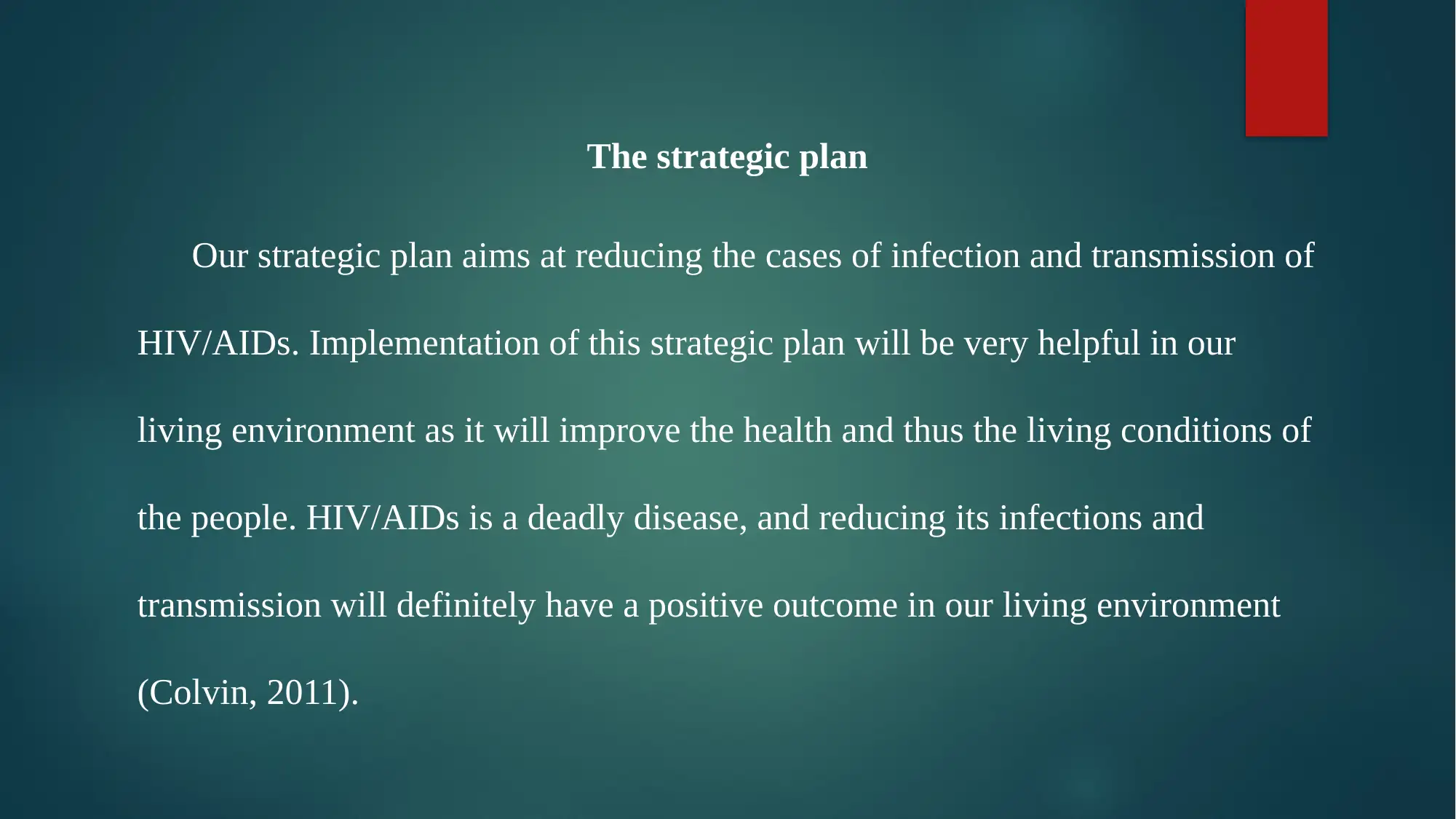
The strategic plan
Our strategic plan aims at reducing the cases of infection and transmission of
HIV/AIDs. Implementation of this strategic plan will be very helpful in our
living environment as it will improve the health and thus the living conditions of
the people. HIV/AIDs is a deadly disease, and reducing its infections and
transmission will definitely have a positive outcome in our living environment
(Colvin, 2011).
Our strategic plan aims at reducing the cases of infection and transmission of
HIV/AIDs. Implementation of this strategic plan will be very helpful in our
living environment as it will improve the health and thus the living conditions of
the people. HIV/AIDs is a deadly disease, and reducing its infections and
transmission will definitely have a positive outcome in our living environment
(Colvin, 2011).
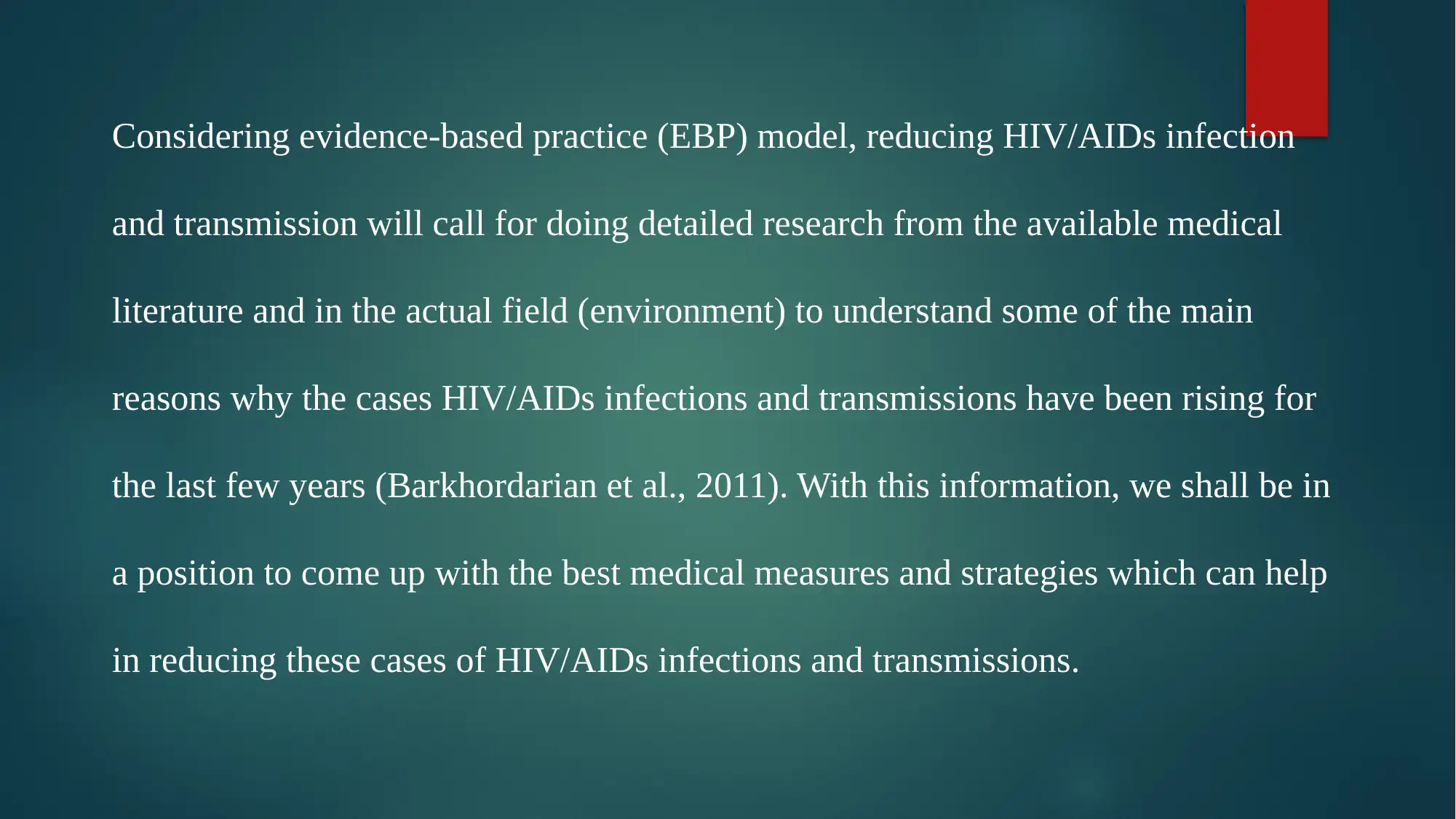
Considering evidence-based practice (EBP) model, reducing HIV/AIDs infection
and transmission will call for doing detailed research from the available medical
literature and in the actual field (environment) to understand some of the main
reasons why the cases HIV/AIDs infections and transmissions have been rising for
the last few years (Barkhordarian et al., 2011). With this information, we shall be in
a position to come up with the best medical measures and strategies which can help
in reducing these cases of HIV/AIDs infections and transmissions.
and transmission will call for doing detailed research from the available medical
literature and in the actual field (environment) to understand some of the main
reasons why the cases HIV/AIDs infections and transmissions have been rising for
the last few years (Barkhordarian et al., 2011). With this information, we shall be in
a position to come up with the best medical measures and strategies which can help
in reducing these cases of HIV/AIDs infections and transmissions.
⊘ This is a preview!⊘
Do you want full access?
Subscribe today to unlock all pages.

Trusted by 1+ million students worldwide
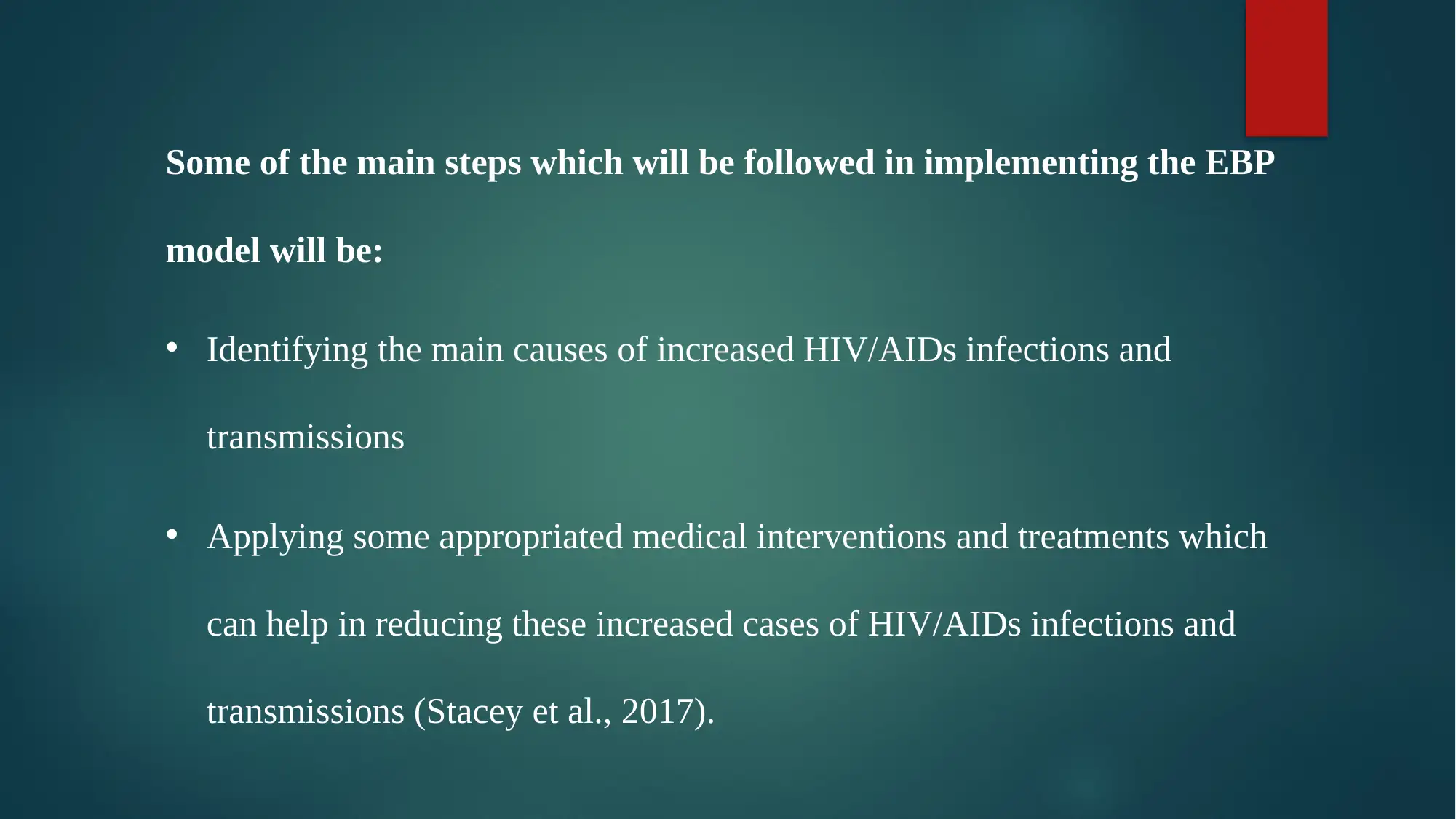
Some of the main steps which will be followed in implementing the EBP
model will be:
• Identifying the main causes of increased HIV/AIDs infections and
transmissions
• Applying some appropriated medical interventions and treatments which
can help in reducing these increased cases of HIV/AIDs infections and
transmissions (Stacey et al., 2017).
model will be:
• Identifying the main causes of increased HIV/AIDs infections and
transmissions
• Applying some appropriated medical interventions and treatments which
can help in reducing these increased cases of HIV/AIDs infections and
transmissions (Stacey et al., 2017).
Paraphrase This Document
Need a fresh take? Get an instant paraphrase of this document with our AI Paraphraser
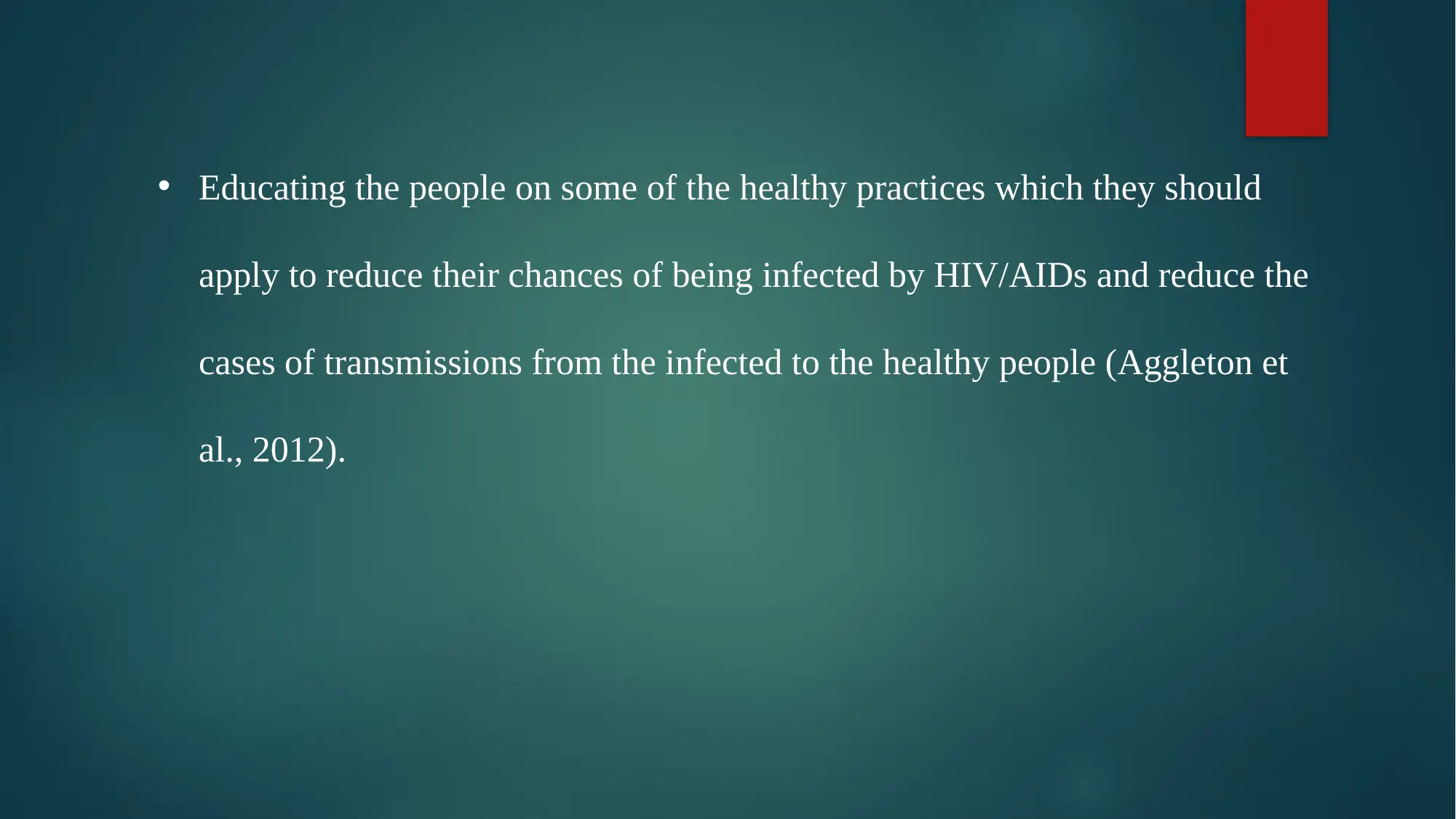
• Educating the people on some of the healthy practices which they should
apply to reduce their chances of being infected by HIV/AIDs and reduce the
cases of transmissions from the infected to the healthy people (Aggleton et
al., 2012).
apply to reduce their chances of being infected by HIV/AIDs and reduce the
cases of transmissions from the infected to the healthy people (Aggleton et
al., 2012).
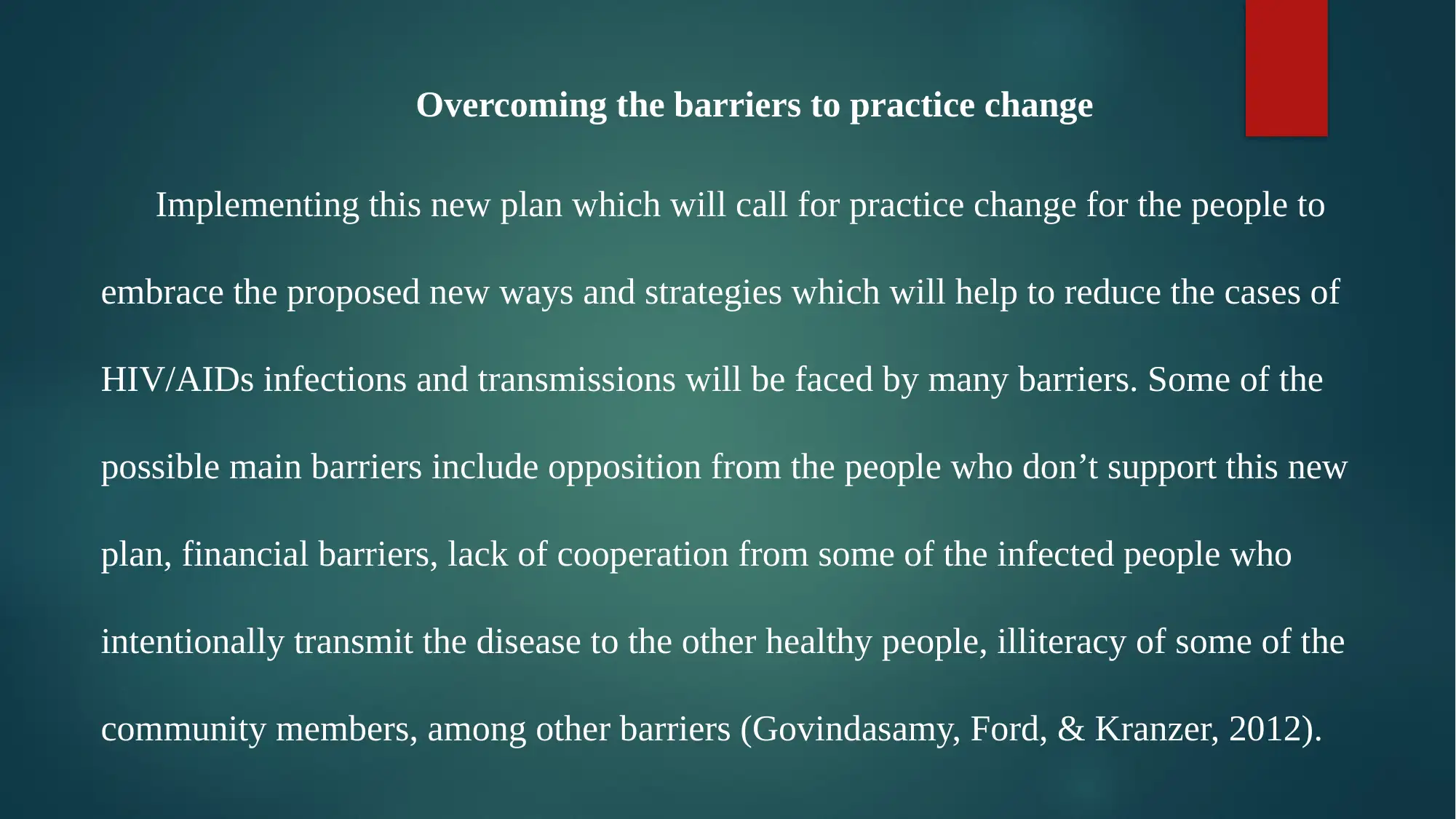
Overcoming the barriers to practice change
Implementing this new plan which will call for practice change for the people to
embrace the proposed new ways and strategies which will help to reduce the cases of
HIV/AIDs infections and transmissions will be faced by many barriers. Some of the
possible main barriers include opposition from the people who don’t support this new
plan, financial barriers, lack of cooperation from some of the infected people who
intentionally transmit the disease to the other healthy people, illiteracy of some of the
community members, among other barriers (Govindasamy, Ford, & Kranzer, 2012).
Implementing this new plan which will call for practice change for the people to
embrace the proposed new ways and strategies which will help to reduce the cases of
HIV/AIDs infections and transmissions will be faced by many barriers. Some of the
possible main barriers include opposition from the people who don’t support this new
plan, financial barriers, lack of cooperation from some of the infected people who
intentionally transmit the disease to the other healthy people, illiteracy of some of the
community members, among other barriers (Govindasamy, Ford, & Kranzer, 2012).
⊘ This is a preview!⊘
Do you want full access?
Subscribe today to unlock all pages.

Trusted by 1+ million students worldwide
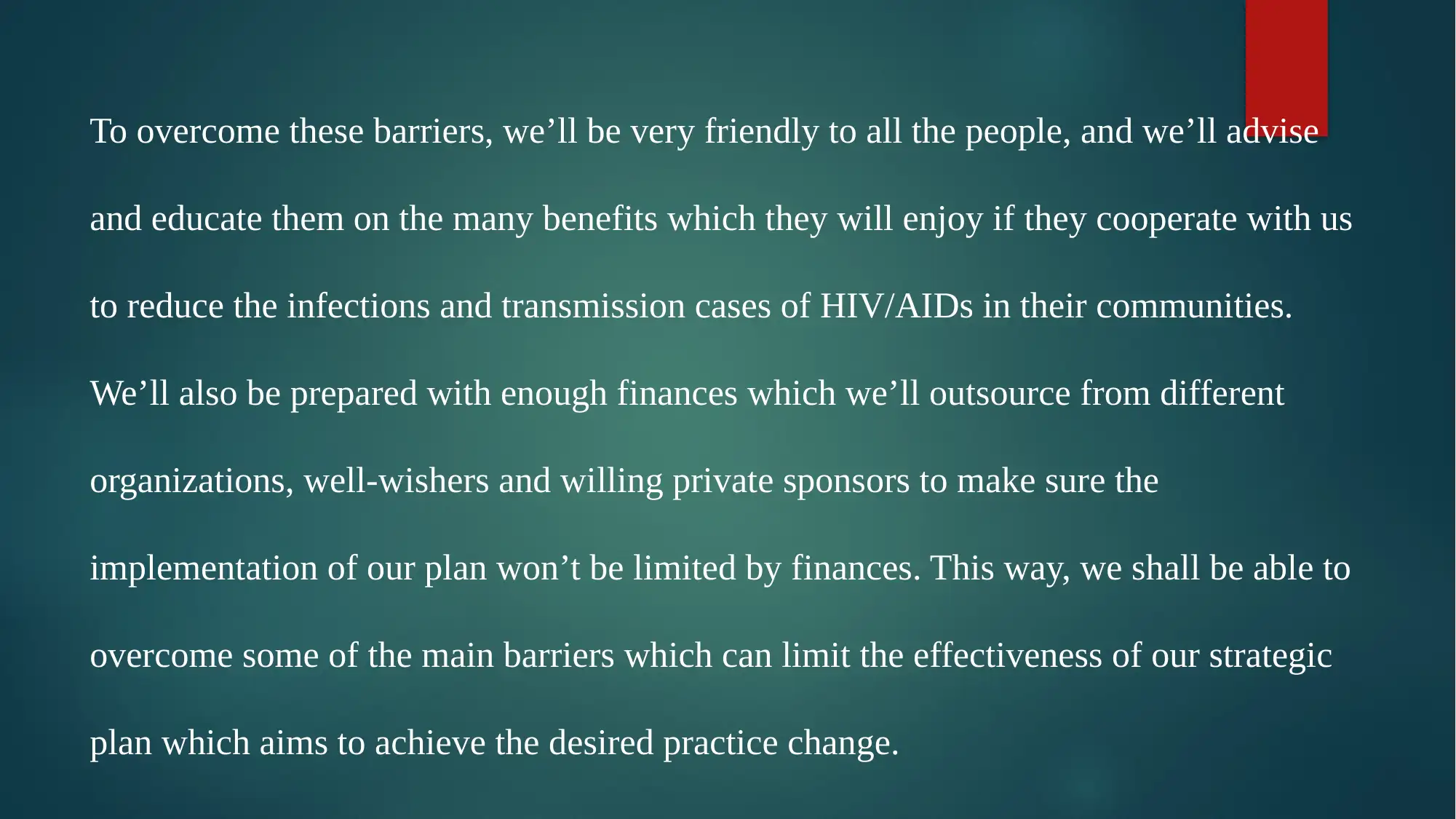
To overcome these barriers, we’ll be very friendly to all the people, and we’ll advise
and educate them on the many benefits which they will enjoy if they cooperate with us
to reduce the infections and transmission cases of HIV/AIDs in their communities.
We’ll also be prepared with enough finances which we’ll outsource from different
organizations, well-wishers and willing private sponsors to make sure the
implementation of our plan won’t be limited by finances. This way, we shall be able to
overcome some of the main barriers which can limit the effectiveness of our strategic
plan which aims to achieve the desired practice change.
and educate them on the many benefits which they will enjoy if they cooperate with us
to reduce the infections and transmission cases of HIV/AIDs in their communities.
We’ll also be prepared with enough finances which we’ll outsource from different
organizations, well-wishers and willing private sponsors to make sure the
implementation of our plan won’t be limited by finances. This way, we shall be able to
overcome some of the main barriers which can limit the effectiveness of our strategic
plan which aims to achieve the desired practice change.
Paraphrase This Document
Need a fresh take? Get an instant paraphrase of this document with our AI Paraphraser
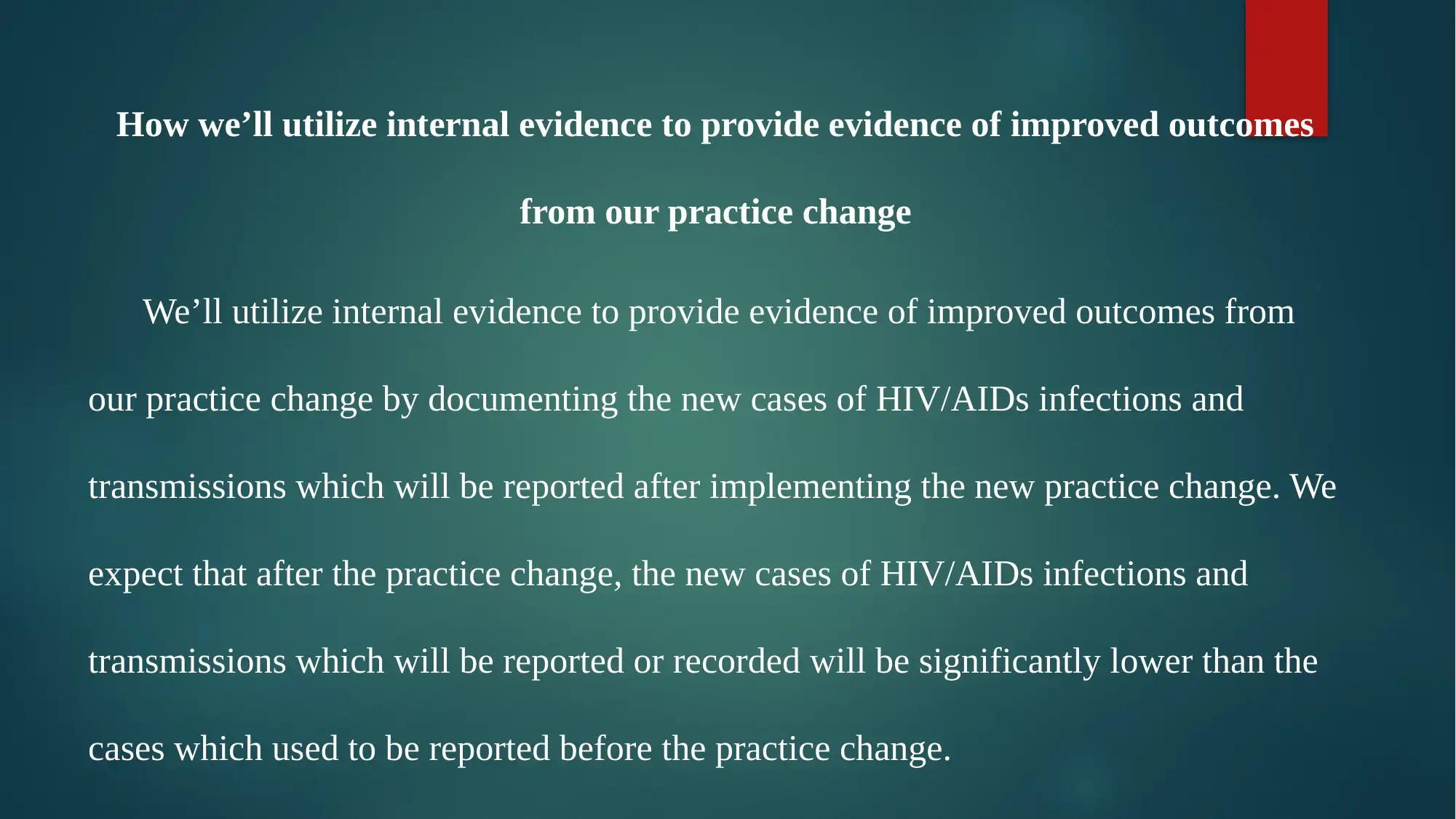
How we’ll utilize internal evidence to provide evidence of improved outcomes
from our practice change
We’ll utilize internal evidence to provide evidence of improved outcomes from
our practice change by documenting the new cases of HIV/AIDs infections and
transmissions which will be reported after implementing the new practice change. We
expect that after the practice change, the new cases of HIV/AIDs infections and
transmissions which will be reported or recorded will be significantly lower than the
cases which used to be reported before the practice change.
from our practice change
We’ll utilize internal evidence to provide evidence of improved outcomes from
our practice change by documenting the new cases of HIV/AIDs infections and
transmissions which will be reported after implementing the new practice change. We
expect that after the practice change, the new cases of HIV/AIDs infections and
transmissions which will be reported or recorded will be significantly lower than the
cases which used to be reported before the practice change.
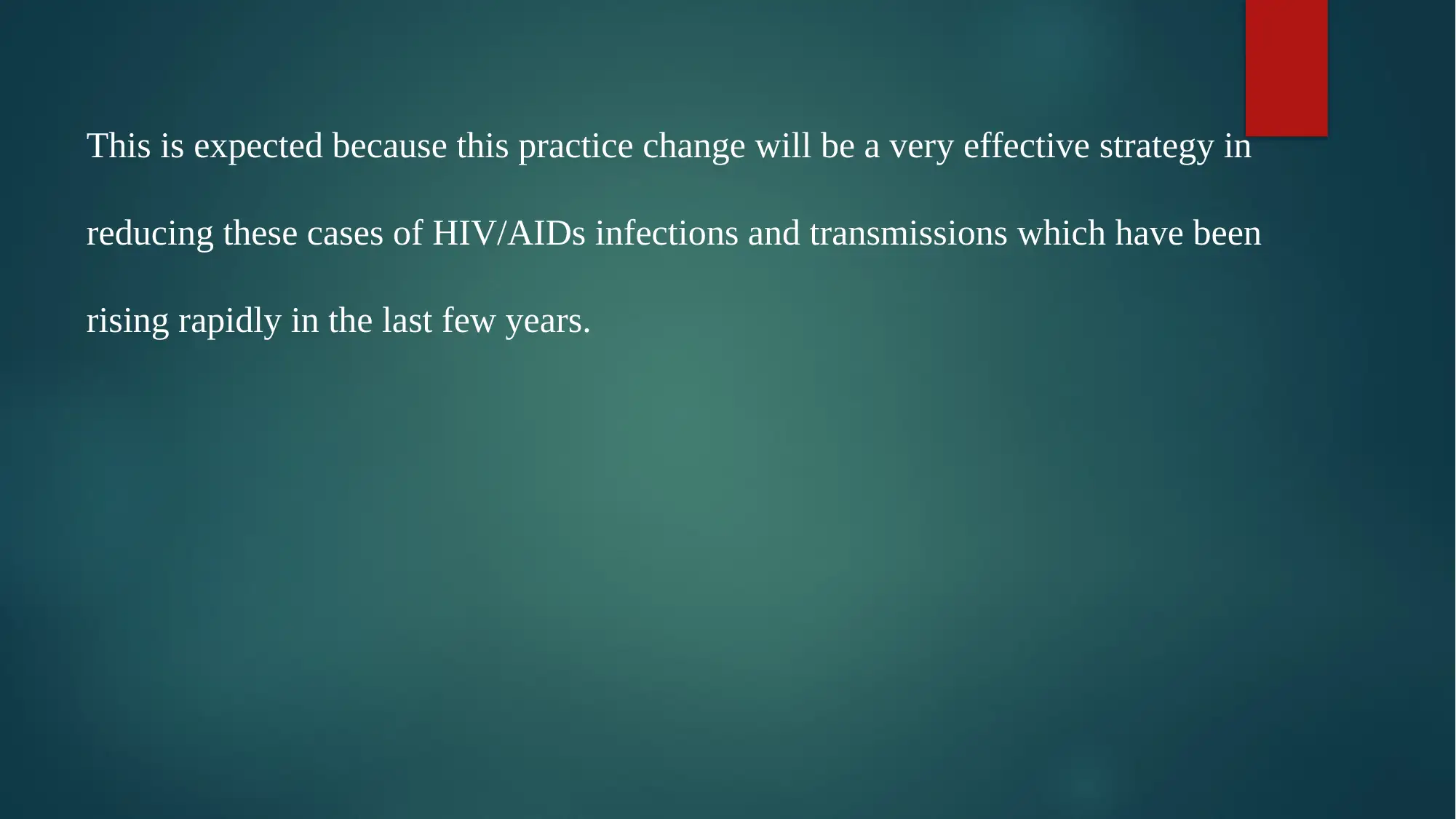
This is expected because this practice change will be a very effective strategy in
reducing these cases of HIV/AIDs infections and transmissions which have been
rising rapidly in the last few years.
reducing these cases of HIV/AIDs infections and transmissions which have been
rising rapidly in the last few years.
⊘ This is a preview!⊘
Do you want full access?
Subscribe today to unlock all pages.

Trusted by 1+ million students worldwide
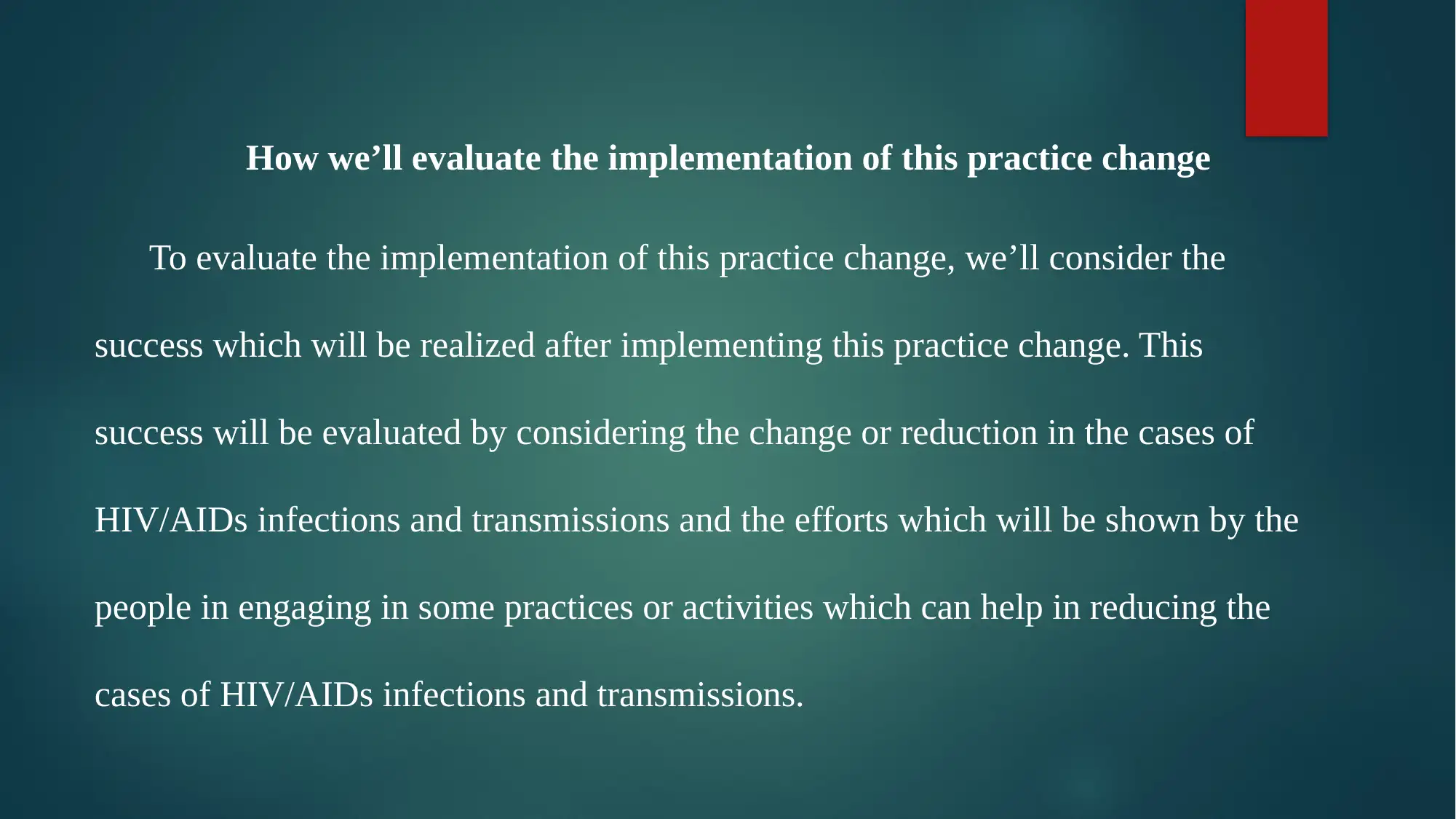
How we’ll evaluate the implementation of this practice change
To evaluate the implementation of this practice change, we’ll consider the
success which will be realized after implementing this practice change. This
success will be evaluated by considering the change or reduction in the cases of
HIV/AIDs infections and transmissions and the efforts which will be shown by the
people in engaging in some practices or activities which can help in reducing the
cases of HIV/AIDs infections and transmissions.
To evaluate the implementation of this practice change, we’ll consider the
success which will be realized after implementing this practice change. This
success will be evaluated by considering the change or reduction in the cases of
HIV/AIDs infections and transmissions and the efforts which will be shown by the
people in engaging in some practices or activities which can help in reducing the
cases of HIV/AIDs infections and transmissions.
Paraphrase This Document
Need a fresh take? Get an instant paraphrase of this document with our AI Paraphraser
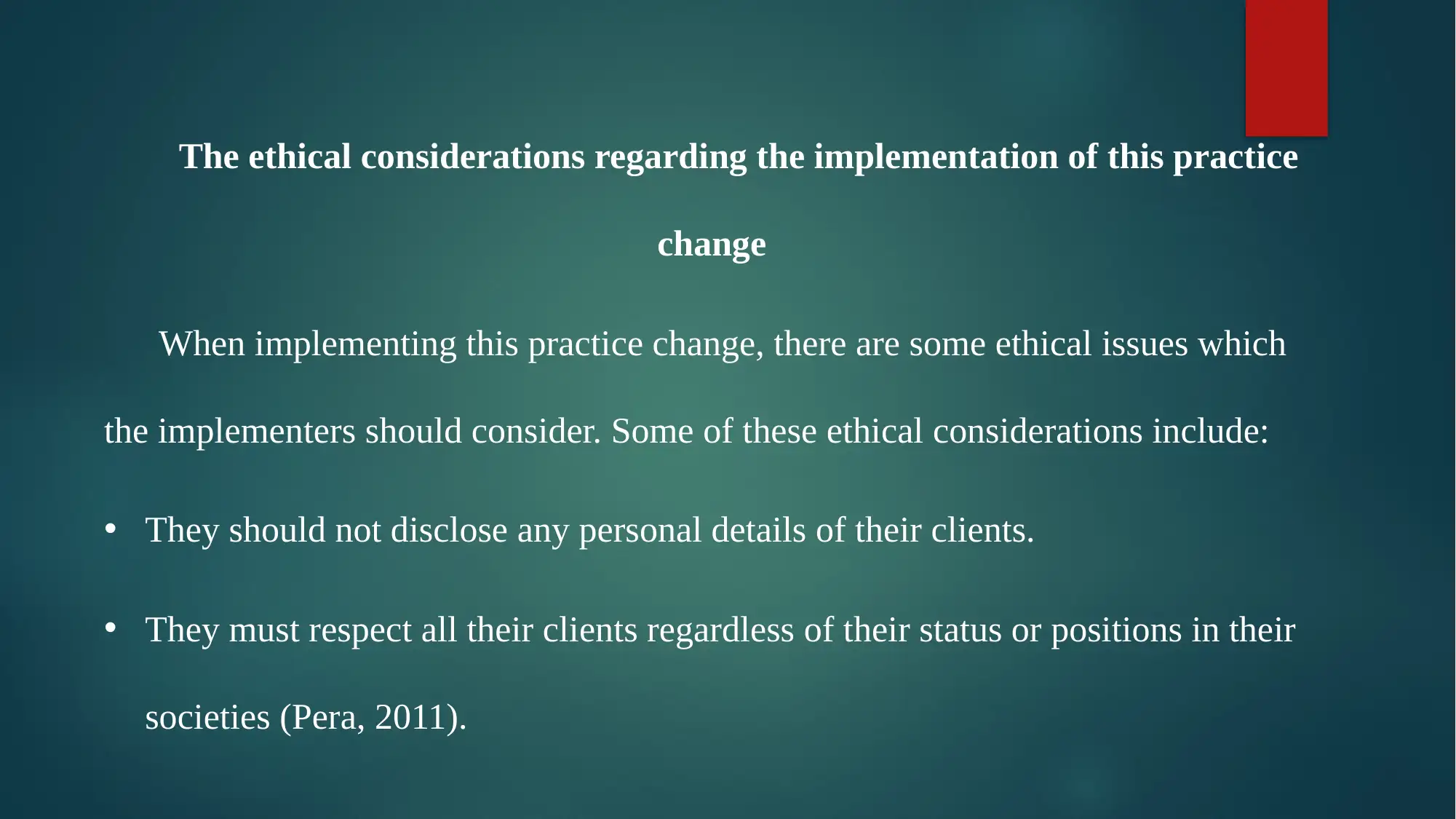
The ethical considerations regarding the implementation of this practice
change
When implementing this practice change, there are some ethical issues which
the implementers should consider. Some of these ethical considerations include:
• They should not disclose any personal details of their clients.
• They must respect all their clients regardless of their status or positions in their
societies (Pera, 2011).
change
When implementing this practice change, there are some ethical issues which
the implementers should consider. Some of these ethical considerations include:
• They should not disclose any personal details of their clients.
• They must respect all their clients regardless of their status or positions in their
societies (Pera, 2011).
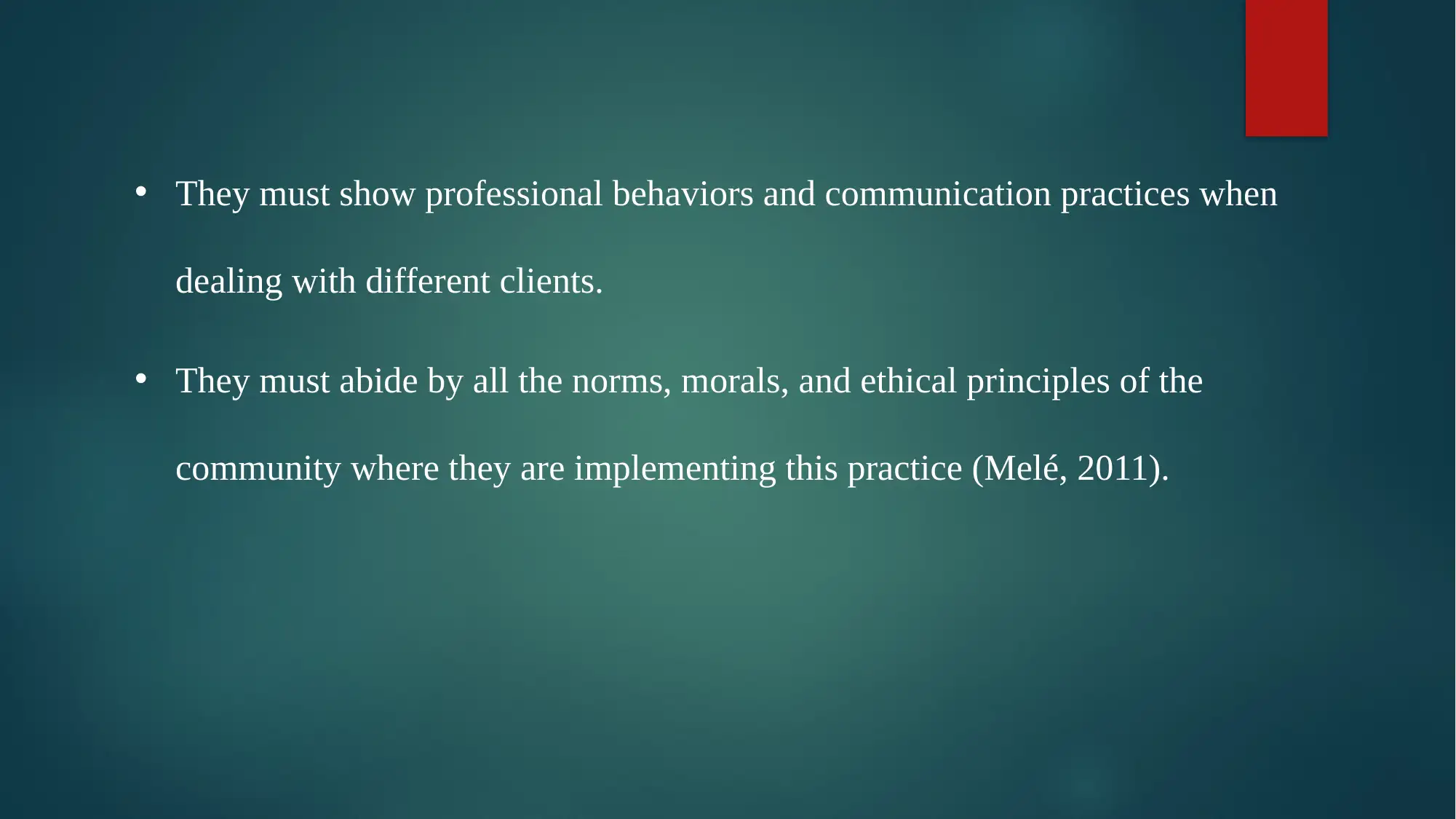
• They must show professional behaviors and communication practices when
dealing with different clients.
• They must abide by all the norms, morals, and ethical principles of the
community where they are implementing this practice (Melé, 2011).
dealing with different clients.
• They must abide by all the norms, morals, and ethical principles of the
community where they are implementing this practice (Melé, 2011).
⊘ This is a preview!⊘
Do you want full access?
Subscribe today to unlock all pages.

Trusted by 1+ million students worldwide
1 out of 14
Related Documents
Your All-in-One AI-Powered Toolkit for Academic Success.
+13062052269
info@desklib.com
Available 24*7 on WhatsApp / Email
![[object Object]](/_next/static/media/star-bottom.7253800d.svg)
Unlock your academic potential
Copyright © 2020–2025 A2Z Services. All Rights Reserved. Developed and managed by ZUCOL.





